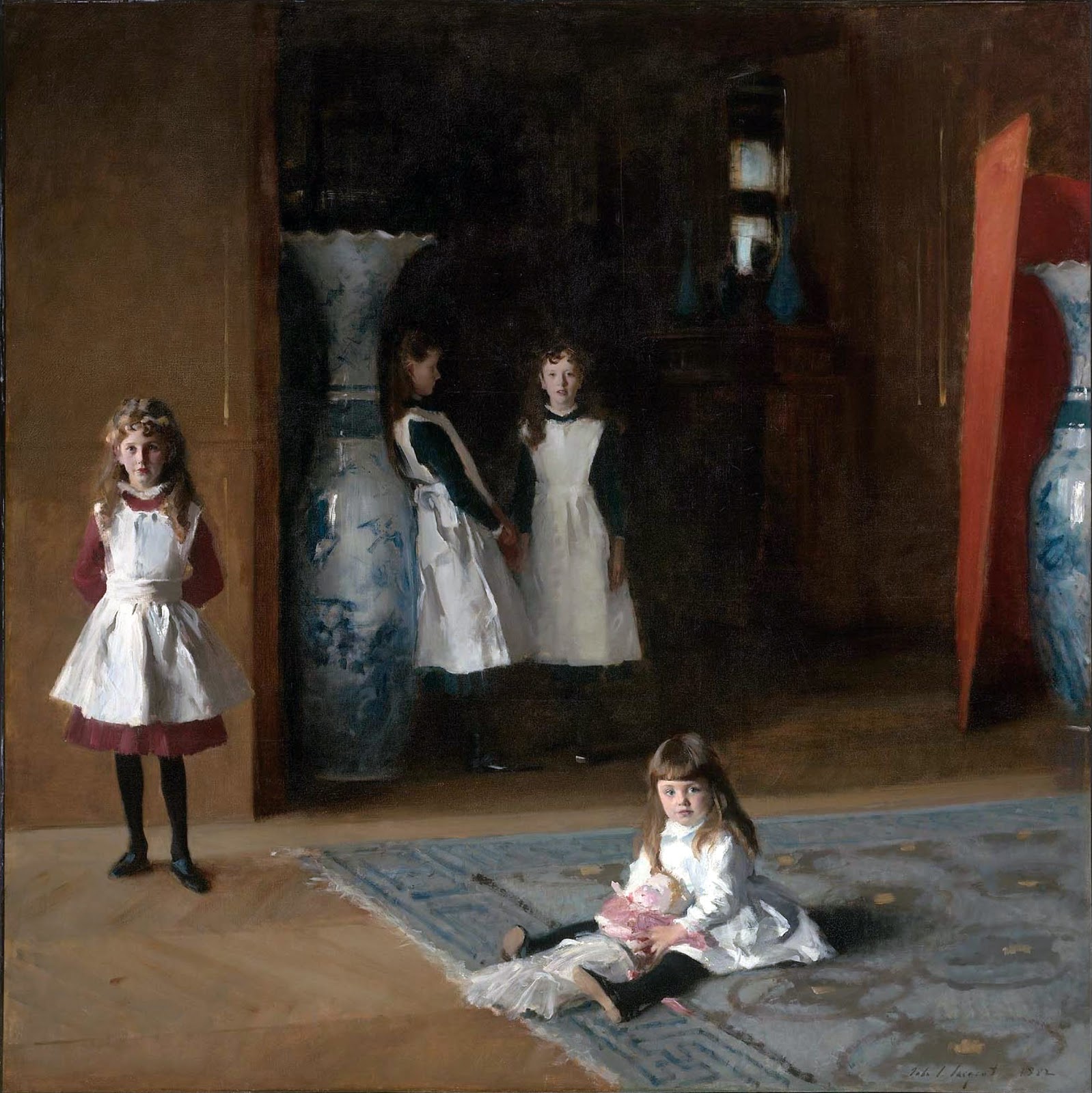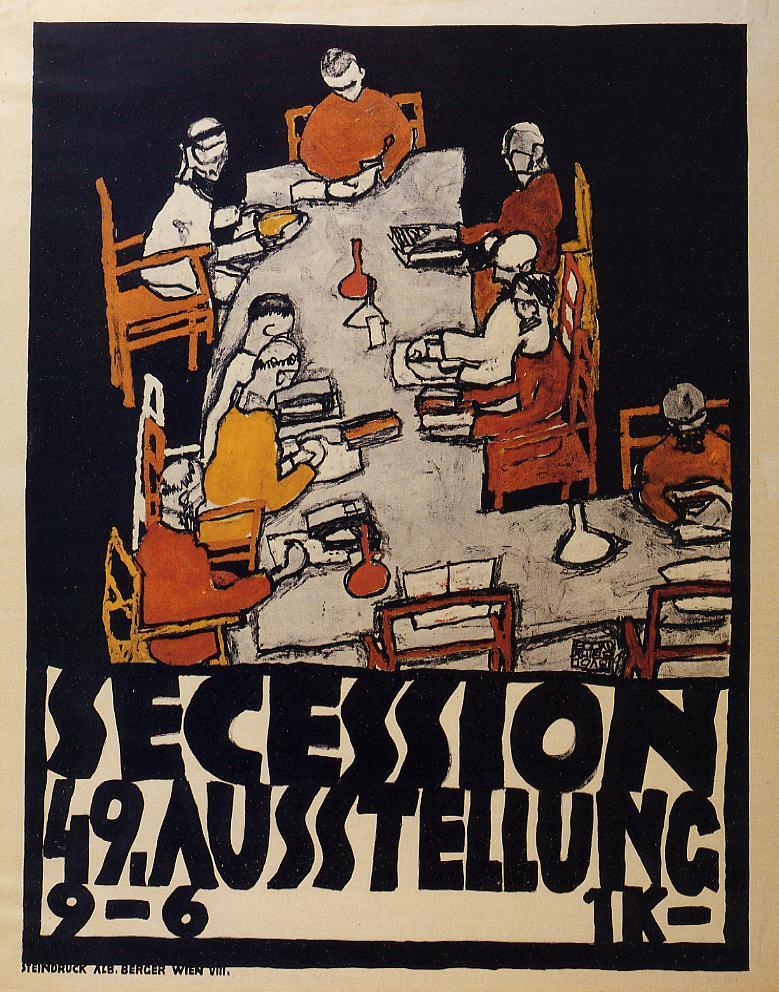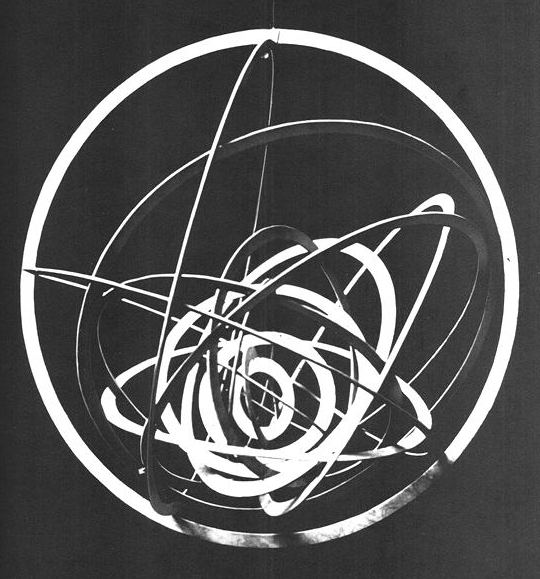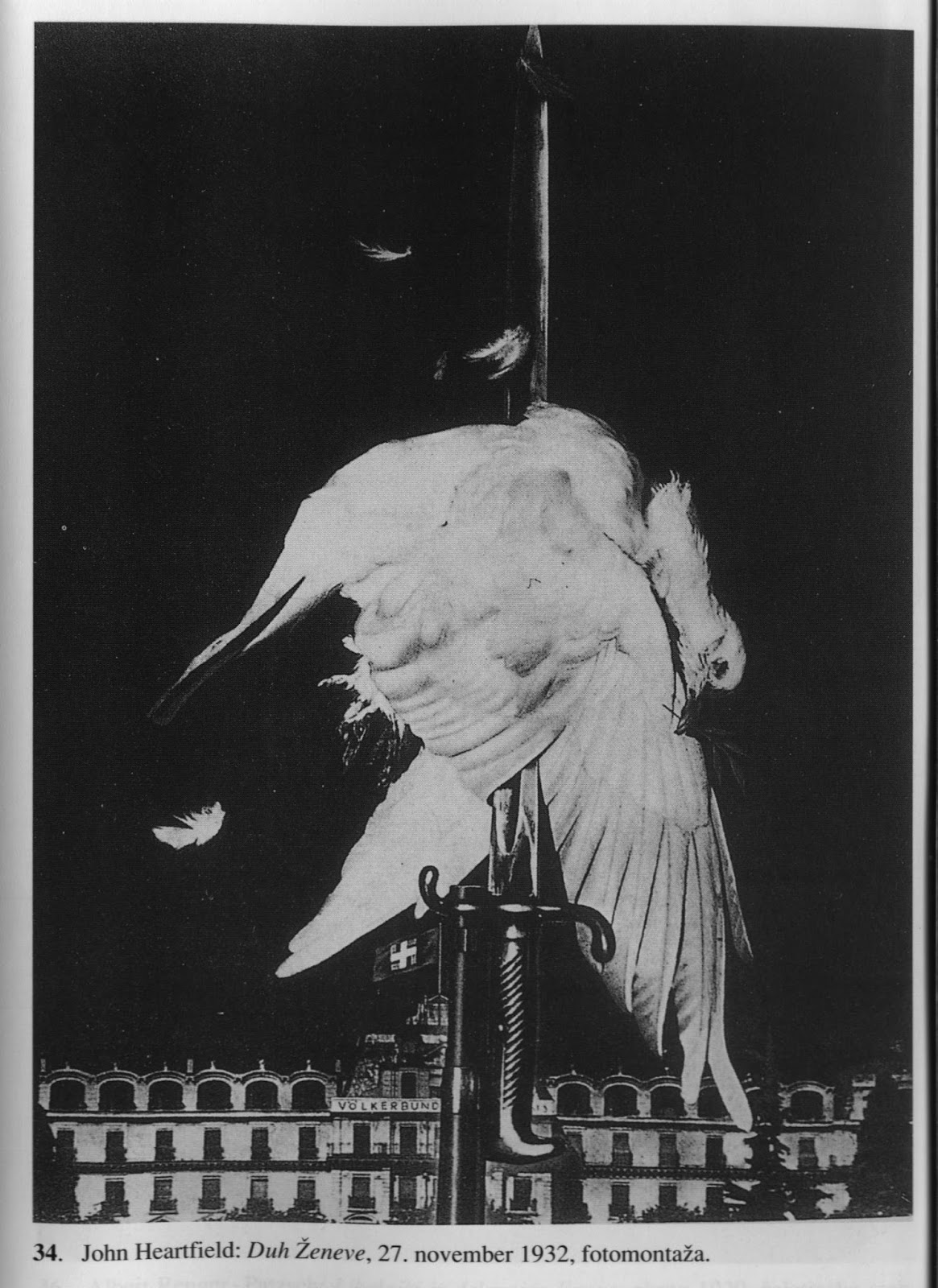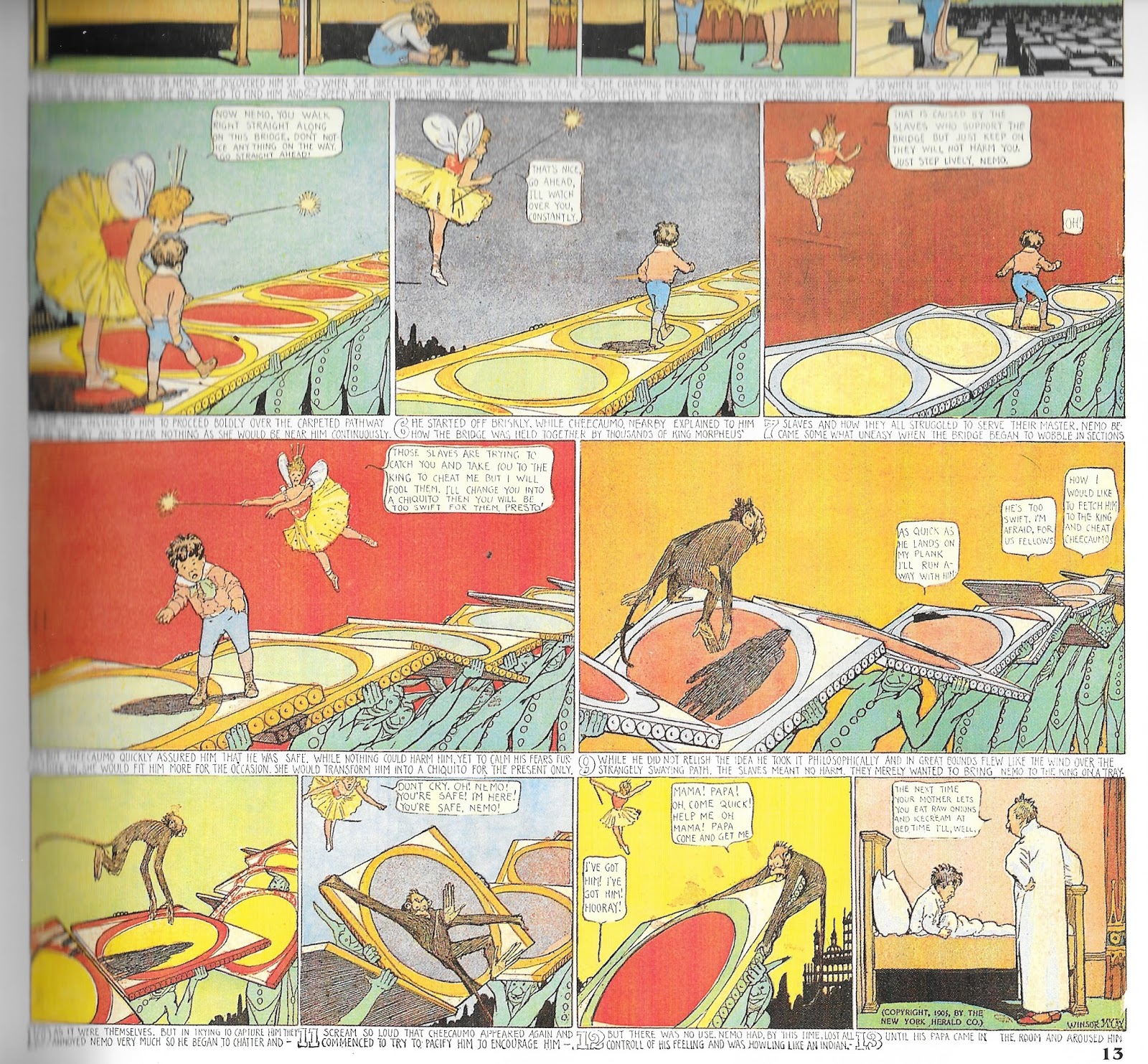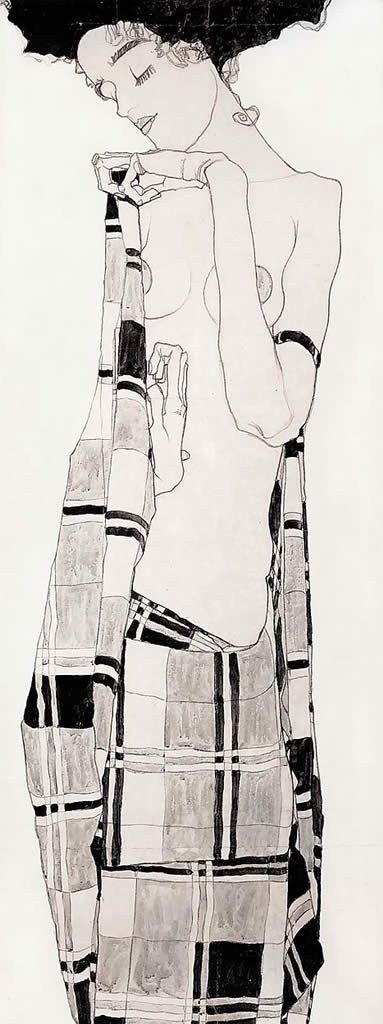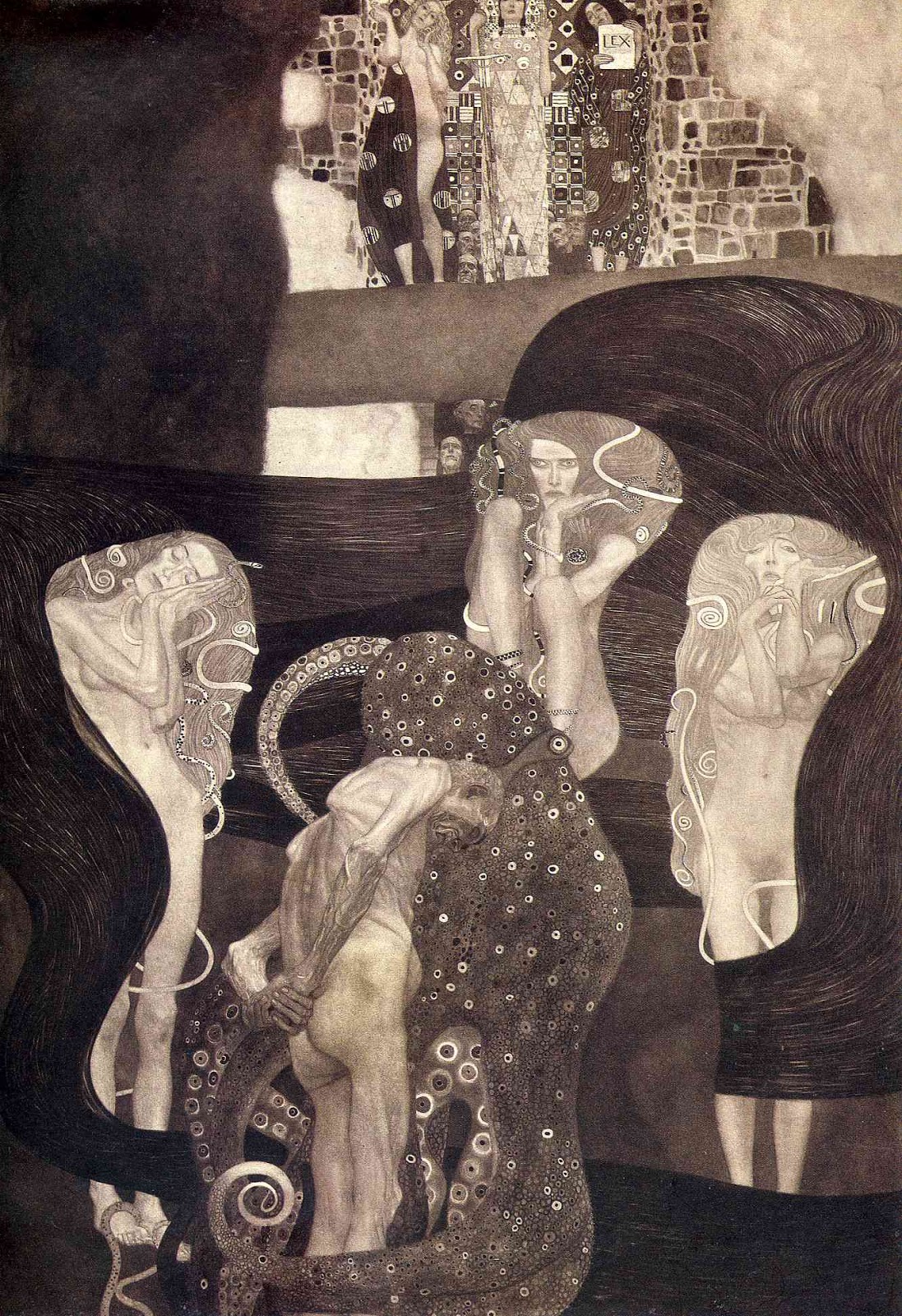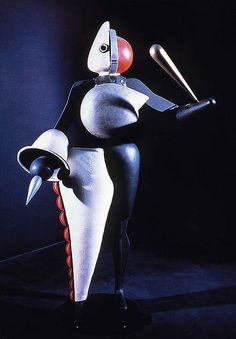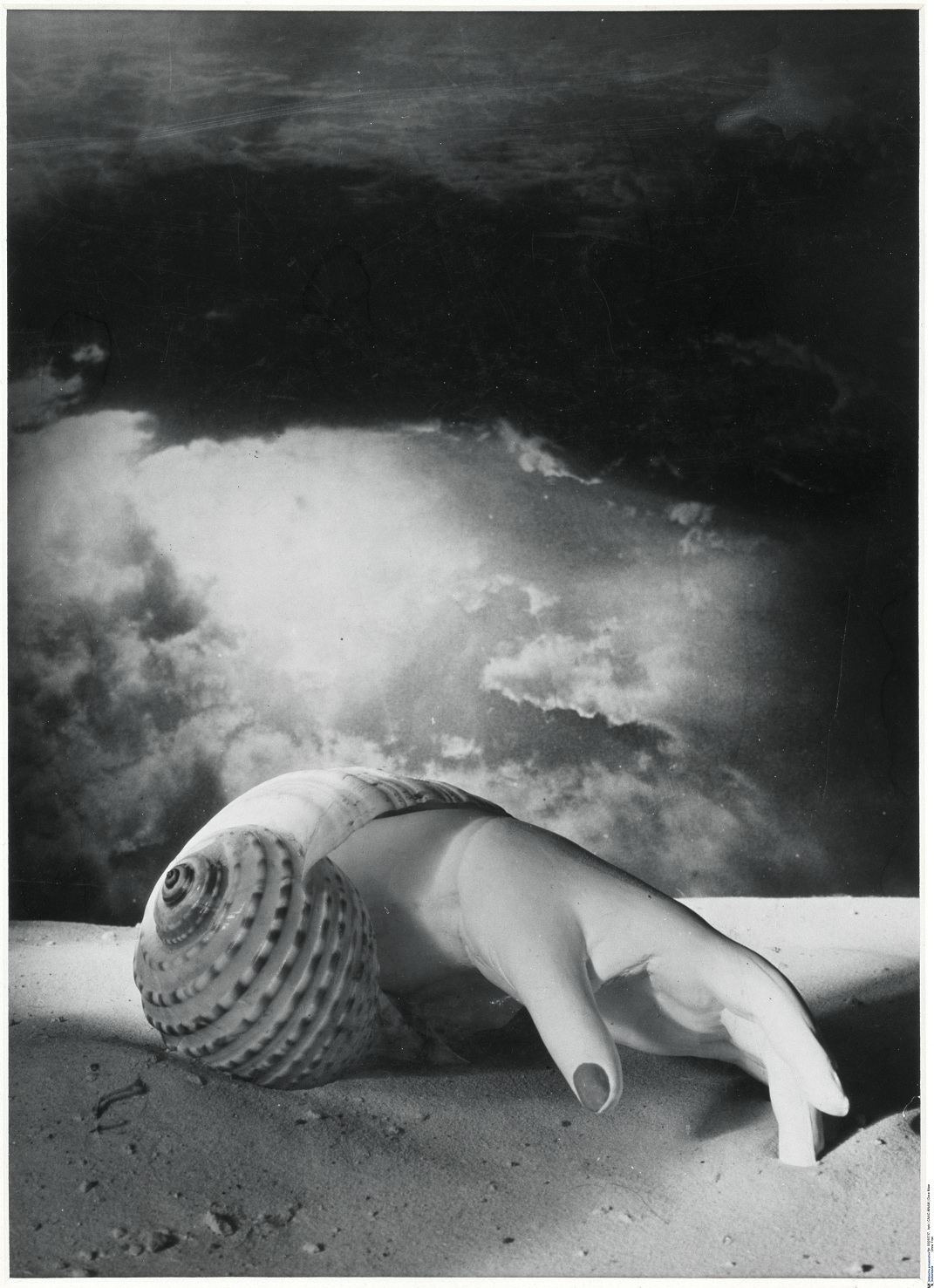10th and maybe last in a series on D&Dable art history.![]() |
| Hans Bellmer, hand-tinted-photo 1934 |
Modernism can be hard to describe. Isn't anything made around the same time as the person looking at it modern? Luckily Modernism, collectively, has something none of the other kinds of art we've looked at in this series has: it has a story--an exciting story with death and bad murder in it.
It is strange to think that something as multifarious and diffused as Modernism (embracing abstraction, surrealism, symbolism, futurist fascists, socialist photomontagists, apolitical golden age illustrators and millions more) as having a story, since story implies unity--but there is a unity and it's granted by the utter consistency of the villain: the anti-modern. That theme of diversity vs unity is apposite: The modern is a fox, the anti-modern is a hedgehog.
The Enlightenment had been going on for 200 years at this point and the anti-modernists were still down with it. They would've called themselves advocates for reason and progress. To them, modernism was a cult of madness. People would be like "It isn't a cult of madness, this is just how the world is" and they'd be like "Whatever, man".
![]() |
Theo Van Doesburg, Dungeon Map With Three
Pit Traps Where Red Is Monster Lairs & Gold
Is The Treasure and Blue Rooms Are Secret c1931 |
We may not know and may never know what the all-hands-down best way to analyze a creative work is--which method leads to the most insight, to the best recommendations for current audiences and future creators--but, thanks to the era of early Modernism (c. 1850-1950), we do at least know what the worst way is. Or at least the worst way the world has yet seen.
We know because a whole lot of worst-ever happened during that time, and art got to be a part of it.
It's 1895 and our story begins with the worst critic in the world--and the worst criticism. His story is not a tragedy, because it doesn't go up and then down--it only goes down. So it's a horror story: a man was bad, he stayed bad, he did bad things, other people did more bad things because he did them, there were bad consequences, then more, they continue to this day…
Max Simon Nordau was no Nazi--he was, like me, a leftist and a Jew. Max Nordau was a bigot of a kind often seen, rarely described, universally tolerated, and monumentally dangerous to a free society. He was not a bigot about race or class or creed--he was a bigot about taste in stuff.
![]() |
Kees Van Dongen, Ever Since Dolly Died
This Painting Has Cause Viewers To Save Or Refuse To Be
More Than 15' From It Forever, 1911 |
Nordau's specific theory was that people who liked what he didn't like had a disease called degeneration--and if you've heard of that idea, it's because it spawned the Nazi concept of Degenerate Art.
As Hitler expressed it, with his trademark subtlety: "...anyone who sees and paints the sky green and fields blue ought to be sterilised".
![]() |
From an official list of over sixteen motherfucking thousand works of art
declared "degenerate" by the Reich. Pretty much everyone who made it into
the art history books from this era is on the list, although only a fraction
appeared in the official Degenerate Art show. Bad things happened to
the artists who stayed in Germany. Their works were variously sold, confiscated
and destroyed, depending on what the Reich was up to at the time. |
The Times explains, if you never heard about it:
“Degenerate Art: The Attack on Modern Art in Nazi Germany, 1937,” at the Neue Galerie, opens with a quietly devastating compare-and-contrast. The walls of the narrow hallway leading onto the first gallery are covered with facing photomurals.
The image in one dates from 1938. It shows the exterior of the of the Schulausstellungsgebaude in Hamburg where the traveling antimodernist exhibition called “Entartete Kunst” — “Degenerate Art” — has opened. The line of visitors waiting to get in stretches down the street.
![]() |
Egon Schiele, My Sister Is Frozen In This Position Due To The
Leucochloridium paradoxum Which, As You Can See, Is Beginning
To Invade Her Abdomen, 1909 |
"The photo on the opposite wall is from 1944. It shows Carpatho-Ukrainian Jews newly arrived at the railroad station at Auschwitz-Birkenau. They are densely crowded together along the length of a platform that runs far into the distance and out of sight. The message is clear: The event in the first picture led or contributed to that in the second. The show itself is one of the few in an American museum in the past two decades to address, on a large scale, the Nazis’ selective demonizing of art, how that helped foment an atmosphere of permissible hatred and forged a link between aesthetics and human disaster.
![]() |
Klimt, A Painting I Did On The Theme of 'Philosophy' that the University of Vienna
Rejected And Censored Basically On The Grounds That It Was A Way Too
Prescient Picture of Where Austrian Philosophy Was Headed, 1899. |
But mentioning all that genocide is gilding the lily. We can totally follow nerd etiquette and discredit Max Nordau while
avoiding Godwinning altogether--like Tipper Gore, a mere
list of Nordau's more prominent targets is enough to indict him as having been completely wrong: Oscar Wilde, Tolstoy, all the pre-Raphaelites--Hunt, Millais (father of all modern mainstream high-fantasy illustration), Verlaine and all the Symbolists, all the Impressionists--Monet, Manet, Seurat, everybody else your mom has hanging on the wall--Baudelaire, Emile Zola, Gustave Flaubert.
Basically Nordau attacked nearly everyone in his era who we now, in 2014, might look back on and accuse of having made some positive and radical contribution to the culture of the 20th century. Nordau even, in
1895, managed to find a feminist to attack--in the form of Henrik Ibsen. In short; if it was good, Max was agin' it.
![]() |
| Odilon Redon--a symbolist. Max was agin' it. |
![]() |
| Odilon Redon, 1882 |
So this is the worst critic ever. Pretty close to objectively. When your criticism's main impact is that it not only leads to the wholesale destruction of the kinds of works of art that formed the entire wellspring of the next hundred years of cultural production and the exile, imprisonment and sometimes even murder of the artists who made it but, in addition to all that, actually and measurably subverted all the broader societal goals you yourself claimed to seek in every country where your ideas were implemented for decades to come simply by taking your literal meaning,
you know you did criticism completely wrong.
![]() |
Kurt Schwitters'Merzbau which translates as "Attempt to Reproduce,
In My Home, The Malevolent and Inhuman Geometries Vistas I
Witnessed That Spring Evening", 1933. He fled Nazi Germany
4 years later |
So How Did He Do It So Wrong?
What Hitler recognized in Nordau was not a similarity of
world-view--Nordau would not have signed himself and his family up for state-assisted suicide in ovens. What linked them was a
style of thought--or, rather, of nonthought. It's essentially a
contempt for thought, even when engaging areas of human experience where there's nothing to do
but think. Stalin was to adopt precisely the same attitude toward modernism in 1934.
![]() |
Egon Schiele, My Sister's Eyes Were Removed
Before They Could Be Infected And Then
Implanted In The Newborn's Head, 1910 |
During the 583 pages of his magnum opus
Degeneration, Nordau outlines the following critical principles:
A. Stuff I don't like is probably
made by people who have something wrong with them.
B. Stuff I don't like probably mostly
appeals to people who have something wrong with them.
C. There are
no possible good reasons to like or make what I don't like.
D. The stakes are incredibly high.
E. I refuse to check any of this.
![]() |
Tamara Lempicka, It's Still Prohibition And I'm Already
Less Uptight About Nipples Than RPGnet, 1930 |
The method is even simpler than the philosophy:
A. Identify a societal ill
B. Claim a work is contributing to it
C. Dare the audience not to see the connection, scaring them into thinking they lose the
intellectual high ground if they don't see it and the
moral high ground if they don't believe it
D. Ignore the counterargument and call anyone making it names
![]() |
| Alberto Giacometti, 3d Sketch For Dungeon With Pterodactyl, 1932 |
This style of thought is, like all conservatism, an appeal to risk-aversion. It appeals to the part of the brain that goes:
I'm not 100%--but can we afford not to believe him? The part that will trade certain pleasure for possible safety. The part that would never dream of trading a bird in the hand for nine in the bush.
Such a conservative approach is somewhat understandable when dealing with, say, explosives disarmament and disposal. It's considerably less understandable when dealing with something that just sits on a wall in a white room in front of drunk curators and bored schoolchildren, so it's imperative that anyone promulgating it constantly claim the risk art poses is
tremendous and forms part of the central struggle of the age. So much so that it outweighs any benefit of looking at the work or even listening to the argument in favor of it.
Maybe this sounds crazy, Nordau suggests,
but can you ever forgive yourself if I'm right?Let's take a closer look at
Degeneration and its maneuvers. Knowing now, with hindsight, that all of these arguments were completely--near genocidally--wrong:
![]() |
Joaquin Torres Garcia, I Have Worked Clues To The Details Of My Murder
At The Hands Of The Buenos Aires Dagon Cult Into This Image, 1944 |
1. It's Not Like Economics Or Class Or Technology Or History Are Engines Of Society Or Anything, It's All On Whatever Poem I'm Worried About Today"Books and works of art exercise a powerful suggestion on the masses. It is from these productions that an age derives its ideals of morality and beauty. If they are absurd and anti-social, they exert a disturbing and corrupting influence on the views of a whole generation. Hence the latter, especially the impressionable youth, easily excited to enthusiasm for all that is strange and seemingly new, must be warned and enlightened as to the real nature of the creations so blindly admired…"![]() |
Harry Clarke, Vornheim Countess Amusing Herself With
Diminutized Courtiers, some time in the '20s |
2. I Am A Fucking Brave As Fuck Hero To Attack Artists Because Artists' Ability To Punish Me Is Far Greater Than, Y'know, Powerful and Entrenched Institutions That Have Actually And Overtly Controlled Peoples' Lives for Millennia
"I have no doubt as to the consequences to myself of my initiative. There is at the present day no danger in attacking the Church, for it no longer has the stake at its disposal. To write against rulers and governments is likewise nothing venturesome, for at the worst nothing more than imprisonment could follow, with compensating glory of martyrdom. But grievous is the fate of him who has the audacity to characterize esthetic fashions as forms of mental decay. The author or artist attacked never pardons a man for recognising in him a lunatic or a charlatan."
![]() |
Performers in Oskar Schlemmer's "Triadic Ballet" ('20s)
whose exotic costumes and ritualized motions allowed
performers to communicate with the Eilraphact Emperors
of Psyaellicharr IV |
3. It's A Really Good Idea To Jump On A Random Metaphor And Beat The Hell Out Of It With The Literal Stick To Make The Other Guy Look Bad
"'Fin de siècle'….No proof is needed of the extreme silliness of the term. Only the brain of a child or of a savage could form the clumsy idea that the century is a kind of living being, born like a beast or a man, passing through all the stages of existence, gradually aging and declining after blooming childhood, joyous youth, and vigorous maturity, to die with the expiration of the hundredth year, after being afflicted in its last decade with all the infirmities of mournful senility."
![]() |
Yves Tanguy, Dynaiadic Fortress On The Elemental Plane of Plasma,
Elevation, Exterior View, To-Be-Keyed, '30s |
4. My Taste Is Objectively Good Because Normal People Can Relate To It
"The Philistine or the Proletarian still finds undiluted satisfaction in the old and oldest forms of art and poetry, if he knows himself unwatched by the scornful eye of the votary of fashion, and is free to yield to his own inclinations...he enjoys himself royally over slap-dash farces and music-hall melodies, and yawns or is angered at Ibsen ; he contemplates gladly chromos of paintings depicting Munich beer-houses and rustic taverns, and passes the open-air painters without a glance. It is only a very small minority who honestly find pleasure in the new tendencies…"
![]() |
Yves Tanguy, Archons of the Beta-Realm Perform Aetheric
Surgery In Preparation for the Coming of the Nythovorg,
30s |
5. Totally Innocuous Stuff I Don't Like Is Ridiculous And I'm Going To Prove It By Describing It Like Only A Psychopath Would
"The children, strolling beside their mothers thus bedecked, are embodiments of one of the most afflicting aberrations into which the imagination of a spinster ever lapsed. They are living copies of the pictures of Kate Greenaway, whose love of children, diverted from its natural outlet, has sought gratification in the most affected style of drawing, wherein the sacredness of childhood is profaned under absurd disguises."
![]() |
| The offending Kate Greenaway. |
![]() |
…and if Nordau won't have the decency to treat illustrators as
civilians in his little turf war, how can I? Here's Elizabeth Shippen Green
pulling out some proto-Cubist space in 1902 to paint a young female
wargamer hard at work building terrain--while Picasso was still
just painting normal paintings only blue. |
6. Let's Pretend The Gothic Isn't an Established And Understood Genre And Then Be Outraged By It Like As If Only Some Kinda Charlie Manson Could Think This Shit Up
"But these balusters, down which naked furies and possessed creatures are rolling in mad riot, these bookcases, where base and pilaster consist of a pile of guillotined heads, and even this table, representing a gigantic open book borne by gnomes, make up a style that is feverish and infernal. If the director-general of Dante's 'Inferno' had an audience-chamber, it might well be furnished with such as these. Carabin's creations may be intended to equip a house, but they are a nightmare."
![]() |
A feverish chair of the infernal
François-Rupert Carabin, probably made
by freezing real cats alive to a plinth like in that
one Vincent Price movie. I mean, I can't
prove it but….probably. |
7. I Am Freaked Out About Sex Stuff That's Considerably Less Risque Than Any Given Nicki Minaj Video
"The vanguard of civilization holds its nose at the pit of undiluted naturalism, and can only be brought to bend over it with sympathy and curiosity when, by cunning engineering, a drain from the boudoir and the sacristy has been turned into it...Elegant titillation only begins where normal sexual relations leave off. Priapus has become a symbol of virtue. Vice looks to Sodom and Lesbos, to Bluebeard's castle and the servant's hall of the "divine" Marquis de Sade's Justine, for its embodiments…
![]() |
Gustav Klimt's Judith II which was frequently mislabelled
"Salome". Why? Because although both the tale of Judith decapitating
Holofernes and the story of Salome decapitating John theBapist
are eminently D&Dable, Judith is a heroine and Salome is a villain.
In typical sexist pigfucker fashion, critics had a hard time
wrapping their heads around the idea that somebody whose
nipple you could see could be on the good guy team. |
"It has been repeatedly pointed out in these pages that the emotionalism of the degenerate has, as a rule, an erotic colouring, because of the pathological alteration in their sexual centres. The abnormal excitability of these parts of the nervous system can have as a consequence both an especial attraction towards woman and an especial antipathy to her. The common element connecting these opposing effects of one and the same organic condition is the being constantly occupied with woman, the being constantly engrossed with presentations in consciousness from the region of sexuality."
![]() |
Has Bellmer, Languish Wraith Attempting To Reconstruct
Itself From Available Materials In An Attic, Mid-Stage. Photo, 1934 |
8. There Are Healthy Ways To Go About Sex And Unhealthy Ones And I'm An Expert Because I Watched Scott Pilgrim Several Times, Ok?
"A man may or at least should choose a certain woman for his consort out of love; but what holds him fast married, after a suitable choice and successful courtship, is no longer physiological love, but a complex mixture of habit, gratitude, unsexual friendship, convenience, the wish to obtain for himseif social advantages (to which must naturally be added an ordered household, social representation, etc.), considerations of duty towards children and State; more or less, also, unthinking imitation of a universal observance.
![]() |
| Man Ray, Golem Familiars, 1947 |
"But feelings such as are described in the Kreutzer Sonata and in Family Happiness the normal man never experiences towards his wife, even if he has ceased to love her in the natural sense of the word.
"These relations are quite otherwise in the degenerate. The morbid activity of his sexual centres completely rules him…"
Egon Schiele, Charmed Victim of the Panoptic Lord
Willingly Consumed By Obliviax Moss, 1909
9. I'm Gonna Pretend I'm Everybody
"Why should I place a high value on the activity of a fellow who with rapture describes the colours and odours of putrid carrion ; and why should I bestow my especial esteem on a painter who shows me the libidinousness of a harlot ? Because the amount of artistic technique involved is difficult?"
![]() |
| Franz Von Bayros |
![]() |
| More Von Bayros |
10. Why Do They Do These Things? They Want The World To Be Bad
"...Catulle Mendes, who began his literary career by being condemned for a moral outrage (brought upon himself by his play Le Roman d'une Nuit) exalts in his later works, of which I will not quote the titles, one of the most abominable forms of unnatural license ; Baudelaire sings of carrion, maladies, criminals and prostitutes ; in short, if one contemplates the world in the mirror of Parnassian poetry, the impression received is that it is composed exclusively of vices, crimes and corruption without the smallest intermixture of healthy emotions, joyous aspects of Nature and human beings feeling and acting honestly.
![]() |
Gustav Klimt, Beethoven Frieze, 1902. Klimt being remembered as
"the guy who painted The Kiss" is like Guns N Roses being remembered
as "that band that did November Rain". |
"There is no indifference here to virtue or vice; it is an absolute predilection for the latter, and aversion for the former. Parnassians do not at all hold themselves 'beyond good or evil/ but plunge themselves up to the neck in evil, and as far as possible from good. Their feigned ' impartiality ' with regard to the drama of morality or immorality is in reality a passionate partisanship for the immoral and the disgusting."
![]() |
Jose Guadelupe Posada from the cover of the unreleased Rifts: Ciudad Juarez
Sourcebook, c. 1900-1913 |
11. I Read About Some Science Words Once And I'm Going To Pretend They Support My Argument
"The purely literary mind, whose merely aesthetic culture does not enable him to understand the connections of things, and to seize their real meaning, deceives himself ...But the physician, especially if he have devoted himself to the special study of nervous and mental maladies, recognises at a glance, in the fin-de-siecle, disposition, in the tendencies of contemporary art and poetry, in the life and conduct of the men who write mystic, symbolic and ' decadent ' works, and the attitude taken by their admirers in the tastes and aesthetic instincts of fashionable society, the confluence of two well-defined conditions of disease, with which he is quite familiar, viz. degeneration (degeneracy) and hysteria, of which the minor stages are designated as neurasthenia."
![]() |
Hans Bellmer, That Was So Dumb I'm Paralyzed Between Facepalming
And Making the 'Loser' Sign. Photo. 1934
|
![]() |
| Paul Klee, Giant So Giant A Peryton Lives In Its Head, 1905 |
12. I Have This Whole Theory About People Who Irresponsibly Like Art I Don't Based On A Continuous And Organized Campaign Of Not Talking To Any Of Them Ever About It
"In order to satisfy any momentary impulse, or inclination, or caprice, they commit crimes and trespasses with the greatest calmness and self-complacency, and do not comprehend that other persons take offence thereat…"
![]() |
| Harry Clarke, from the Faust Illustrations I believe |
13. People Like Stuff I Don't Because They're Egotistical And Irresponsible And Just Don't Care About How Much They're Hurting The Rest Of Us
"The two psychological roots of moral insanity, in all its degrees of development, are, firstly, unbounded egoism, and, secondly, impulsiveness ability to resist a sudden impulse to any deed; and these characteristics also constitute the chief intellectual stigmata of degenerates...
![]() |
Claude Cahun, Self-Portraits Trapped In the
Phylactery of the Cephaloraptor, 20s or 30s |
"When, therefore, an Oscar Wilde goes, about in ' aesthetic costume ' among gazing Philistines, exciting either their ridicule or their wrath, it is no indication of independence of character, but rather from a purely anti-socialistic, ego-maniacal recklessness and hysterical longing to make a sensation, justified by no exalted aim ; nor is it from a strong desire for beauty, but from a malevolent mania for contradiction."
![]() |
| Aubrey Beardsley |
14. …Also, They're Just Trying to Fit In
"...and certain silly critics, when, through fear of being pronounced deficient in comprehension, they make desperate efforts to share the emotions of a degenerate in regard to some insipid or ridiculous production…"
![]() |
| Xanti Schawinsky, What Is This I Don't Even,1924 |
![]() |
Paul Klee, These Rolls On The Mutation Tables Have Left Me
Embittered But I Have The Wand of Excision Strapped To My Arm,
1905 |
15. …And Just Trying To Not Fit In And They Just Want Attention
"We see a number of young men assemble for the purpose of founding a school. It assumes a special title, but in spite of all sorts of incoherent cackle and subsequent attempts at mystification it has, beyond this name, no kind of general artistic principle or clear aesthetic ideal. It only follows the tacit, but definitely recognisable, aim of making a noise in the world, and by attracting the attention of men through its extravagances, of attaining celebrity and profit, and the gratification of all the desires and conceits agitating the envious souls of these filibusters of fame."
![]() |
| More Oskar Schlemmer dancers |
16. In Order To Pitch My Screed As Helpful Advice And To Not Completely Lose My Audience, I'll Point Out My Target Has Talent, They're Just Misusing It
"It must not for that matter be supposed that degeneration is synonymous with absence of talent. Nearly all the inquirers who have had degenerates under their observation expressly establish the contrary."
![]() |
Egon Schiele, Self Portrait While Scribbling
Formula Allowing Adele's Mirror-Twin To Attain
Self-Awareness, 1910 |
17. These People Will Believe Anything Because They Interpret Art In Some Creepy Way I Just Now Made Up. (Unlike Me--I Read All This Toxic Stuff It And Am Immune Because Hey Look Is That a Panda Over There…)
"A result of the susceptibility of the hysterical subject to suggestion is his irresistible passion for imitation, and the eagerness with which he yields to all the suggestions of writers and artists. When he sees a picture, he wants to become like it in attitude and dress ; when he reads a book, he adopts its views blindly. He takes as a pattern the heroes of the novels which he has in his hand at the moment, and infuses himself into the characters moving before him on the stage."
![]() |
| Tina Modotti, Hands of a Puppeteer. Photo.1929 |
18. Basically Pretty Much Anything They Do That We Don't Is A Sign They're Fucked Up Even When I Can't Actually Connect It To My Bad-Art-Creates-Evil-Crime Thesis
"The present rage for collecting, the piling up, in dwellings, of aimless bric-a-brac, which does not become any more useful or beautiful by being fondly called bibelots, appear to us in a completely new light when we know that Magnan has established the existence of an irresistible desire among the degenerate to accumulate useless trifles. It is so firmly imprinted and so peculiar that Magnan declares it to be a stigma of degeneration, and has invented for it the name ' oniomania,' or ' buying craze.' ![]() |
Joseph Cornell, Any Player Worth Their Salt Will Look At
This Box, Realize the Bottles Are Too Small To Be
Taking Up A Box That Tall And Realize There's A False Bottom,
1940 |
![]() |
Joseph Cornell, Each Blue Bead Is Filled With Liquid Time, But One
Of The Three Glasses Is Now In The Possession Of Nyarlathotep, 1939 I think |
![]() |
Joseph Cornell, The Effect Of The Various Potions Is
Coded By Color But Don't Tell The Players That, 1943 |
"Richard Wagner is in himself alone charged with a greater abundance of degeneration than all the degenerates put together with whom we have hitherto become acquainted…He displays in the general constitution of his mind the persecution mania, megalomania and mysticism ; in his instincts vague philanthropy, anarchism, a craving for revolt and contradiction ; in his writings all the signs of graphomania, namely, incoherence, fugitive ideation, and a tendency to idiotic punning, and, as the groundwork of his being, the characteristic emotionalism of a colour at once erotic and religiously enthusiastic."
![]() |
| Alphonse Mucha, La Trappistine 1897 |
19. The Fact That These People Form Groups Of Like-Minded Individuals Is Very Suspicious And Uncreative. Especially If They Form Groups In Ways That Are Slightly Different From The Way We Form Groups Which We Must Be Doing Since I Have An Audience
"The mere fact that an artist or author allows himself to be sworn in to the party cry of any ' ism,' that he perambulates with jubilations behind a banner and Turkish music, is complete evidence of his lack of individuality that is, of talent.
![]() |
John Singer Sargent, Print Out This Image Of The Suspects And Ask The
Players Which One They Talk To First, If Anyone Notices The Swastika on
The Carpet, Have Them Roll A San Check, 1882 |
"...Independent minds (we are not here speaking of mere imitators), united by a good critic into a group, may, it is true, have a certain resemblance to each other, but, as a rule, this resemblance will be the consequence, not of actual internal affinity, but of external influences…
![]() |
| Oskar Schlemmer's duplicates, wielding rapiers and a clonesphere |
"Quite otherwise it is when authors or artists consciously and intentionally meet together…The predilection for forming societies met with among all the degenerate and hysterical may assume different forms. Criminals unite in bands, as Lombroso expressly establishes. Among pronounced lunatics it is the folie a deux, in which a deranged person completely forces his insane ideas on a companion ; among the hysterical it assumes the form of close friendships, causing Charcot to repeat at every opportunity : ' Persons of highly-strung nerves attract each other and finally authors found schools. "
![]() |
Dorothea Tanning The Touch of the Gargantuan Growth Caused
Targets To De-Age But Audsley Retained Her Pact Magic, 1943 |
20. And, Doubly Suspicious--These Group-Forming Losers Who Are So Uncreative As To Have Things In Common Have Nothing In Common! Hah!
"The word Symbolism conveys, as we have seen, no idea to its inventors. They pursue no definite artistic tendency ; hence it is not possible to show them that their tendency is a false one. "
![]() |
| Egon Schiele, Running 5th Edition For The First Time c.1918 |
21. I Can Maintain My Progressive Cred By Suggesting New Ideas I Don't Like Aren't Actually New Ideas, They're Just Gibberish
"...everyone capable of logical thought will recognise that he commits a serious error if, in the aesthetic schools which have sprung up in the last few years he sees the heralds of a new era. They do not direct us to the future, but point backwards to times past. Their word is no ecstatic prophecy, but the senseless stammering and babbling of deranged minds, and what the ignorant hold to be the outbursts of gushing, youthful vigour and turbulent constructive impulses are really nothing but the convulsions and spasms of exhaustion.
![]() |
| Rodchenko, Hanging Construction, 1920 |
"We should not allow ourselves to be deceived by certain catch-words, frequently uttered in the works of these professed innovators. They talk of socialism, of emancipation of the mind, etc., and thereby create the outward show of being deeply imbued with the thoughts and struggles of the times. But this is empty sham. The catch-words in vogue are scattered through the works without internal sequence, and the struggles of the times are merely painted on the outside."
![]() |
John Hearfield antifascist photomontage "Blood And Fire", 1934.
He'd jumped out his window to escape the SS the year before. |
22. Unlike Me, My Bullying Foe Cheats--By Using Facts To Back Him Up
"Ruskin is one of the most turbid and fallacious minds, and one of the most powerful masters of style, of the present century….His mental temperament is that of the first Spanish Grand Inquisitors. He is a Torquemada of aesthetics. He would burn alive the critic who disagrees with him, or the dull Philistine who passes by works of art without a feeling of devout awe. Since, however, stakes do not stand within his reach, he can at least rave and rage in word, and annihilate the heretic figuratively by abuse and cursing.
![]() |
| Sidney Sime. Krampus. |
"To his ungovernable irascibility he unites great knowledge of all the minutiae in the history of art. If he writes of the shapes of clouds he reproduces the clouds in seventy or eighty existing pictures, scattered amongst all the collections of Europe….This heaping up of fact, this toilsome erudition, made him conqueror of the English intellect, and explains the powerful influence which he obtained over artistic sentiment and the theoretic views concerning the beautiful of the Anglo-Saxon world."
![]() |
| Kurt Schwitters, Picture of Spatial Growths - Picture with Two Small Dogs 1920–39 |
23. Yes, The Classics Are the Classics, But When These People Look Back At The Classics, They Imitate All the Bad Stuff About The Classics Because They Forgot To Ask Me First
"There they had perfect models to imitate ; they were bound to take for their starting-point these Fra Angelicos, Giottos, Cimabues, these Ghirlandajos and Pollajuolos. Here were paintings bad in drawing, faded or smoked, their colouring either originally feeble or impaired by the action of centuries; pictures executed with the awkwardness of a learner representing events in the Passion of Christ, in the life of the Blessed Virgin, or in the Golden Legend, symbolizing childish ideas of hell and paradise, and telling of earnest faith and fervent devotion. They were easy of imitation, since, in painting pictures in the style of the early masters, faulty drawing, deficient sense of colour, and general artistic incapacity, are so many advantages."![]() |
| Aubrey Beardsley, from Le Morte D'Arthur,1893, his first major work |
24. Despite My Appeal to Objective Science, I've Included Some Subjective Taste-Based Loopholes Big And Flexible Enough That Anything I Like Can Fit Right Through Them..."A painting, a group, may represent the most immoral and most criminal incident ; nevertheless, the individual constituent parts the atmosphere, the harmonies of colour, the human figures may be beautiful in themselves, and the connoisseur may derive enjoyment from them without dwelling on the subject of the work...![]() |
| Ivan Bilibin, Baba Yaga, 1902 |
"The noxiousness of the snake does not lie in its copper-red dorsal bands, nor the terribleness of the beast of prey in its graceful appearance, nor the danger of the poisonous plant in the form and colour of its blossoms. In these cases the sensuously-beautiful outweighs the morally-repulsive, because it is more immediately present, and, in the collective impression, allows the feelings of pleasure to predominate…"![]() |
Sarah Stilwell Weber, Woman With Leopards 1906. After seeing this, you
pretty much decide if you see a leopard
and it's not on that red fabric it's just bullshit. |
"…When, however, the work betrays the indifference of the author to the evil or ugliness he depicts, nay, his predilection for it, then the abhorrence provoked by the work is intensified by all the disgust which the author's aberration of instinct inspires in us, and the aggregate impression is one of keenest displeasure. Those who share the emotions of the author, and hence are with him attracted and pleasurably excited by what is repugnant, diseased and evil, are the degenerate. "
![]() |
John Heartfield photomontage: The Meaning of Geneva, Where
Capital Lives, There Can Be No Peace, 1932 |
"It would prove nothing in regard to Tolstoy's Kreutzer Sonata
or Ibsen's Rosmersholm
if it were of necessity admitted that Goethe's Werther
suffers from irrational eroticism, and that the Divina Commedia
and Faust
are Symbolic poems. The whole objection, indeed, proceeds from a non-recognition of the simplest biological facts. The difference between disease and health is not one of kind, but of quantity…As it is here a question of more or less, it is impossible to define their limits sharply. Extreme cases are naturally easily recognised. But who shall determine with accuracy the exact point at which deviation from the normal, (i.e. from health) begins ?"![]() |
Dora Maar photo, Pere Ubu, 1936
Maar took this form moments before consuming
her lover, Picasso, for being so much worse at
art than her |
25. Since Art Isn't Life, No 'Realism'; Could Ever Be Completely Realistic, Which Gives Me A Really Cool Opportunity To Be An Insane Pedant With Anyone Who Uses That Word
"In the novels of Balzac and Flaubert, where the ' milieu ' plays so great a part, the 'milieu' in fact, explains nothing. For the personages who move in the same ' milieu ' are, notwithstanding, wholly different…We have seen above that M. Zola is far from being capable of transcribing in his novels life as real and as a whole. Like all the imaginative writers before him, he also makes a choice; from a million thoughts of his personages, he reproduces one only; from ten thousand functions and actions, one only ; from years of their life, some minutes, or merely seconds ; his supposed ' slice from life ' is a condensed and rearranged conspectus of life, artificially ordered according to a definite design,and full of gaps."![]() |
| Windsor McKay, Little Nemo, 1905-1911 |
26. I Can't Have A Conversation With The People I Am Talking About--They're Crazy"No one, I hope, will think me childish enough to imagine that I can bring degenerates to reason by incontrovcrtibly and convincingly demonstrating to them the derangement of their minds. He whose profession brings him into frequent contact with the insane knows the utter hopelessness of attempting by persuasion or argument to bring them to a recognition of the unreality and morbidness of their delusions."![]() |
A performance of Alfredo Jarry's Ubu Roi, first performed in 1896.
Pere Ubu: "It is very possible, but I’ve changed the government and I announced
in the newspaper that you will have to pay all existing taxes twice, and
three times those that will be designated subsequently. With this system
I’ll make my fortune quickly; then I will kill everybody and leave." |
27. People Who Claim To Enjoy Things I Don't Like Don't Actually Enjoy Them
![]() |
| Edmound Du Lac, Mermaid, 1911 I think |
28. Death Threats"Mystics, but especially ego-maniacs and filthy pseudo-realists, are enemies to society of the direst kind. Society must unconditionally defend itself against them….Our streets and our houses are not built for you ; our looms have no stuffs for you ; our fields are not tilled for you. All our labour is performed by men who esteem each other, have consideration for each other, mutually aid each other, and know how to curb their selfishness for the general good. There is no place among us for the lusting beast of prey ; and if you dare return to us, we will pitilessly beat you to death with clubs.'"![]() |
| Harry Clarke |
29. Individual Desire Must Be Suppressed For the Sake Of The Greater Good
"Whoever preaches absence of discipline is an enemy of progress ; and whoever worships his 'I ' is an enemy to society. Society has for its first premise, neighbourly love and capacity for self-sacrifice ; and progress is the effect of an ever more rigorous subjugation of the beast in man, of an ever tenser self-restraint, an ever keener sense of duty and responsibility."![]() |
| Franz Von Bayros, THAT IS NOT HOW YOU PLAY D&D! 1911 |
30. I Am Not In Favor Of Censorship, I'm Not A Prude, I Just Think People Should Speak Out Against People For Being Different Than Me
"The police cannot aid us. The public prosecutor and criminal judge are not the proper protectors of society against crime committed with pen and crayon. They infuse into their mode of proceeding too much consideration for interests not always, not necessarily, those of cultivated and moral men... Hence it comes to this, that the pornographist must be branded with infamy.![]() |
Egon Schiele, Call of Cthulhu PC Caught Between Repose
And Infection, 1909 |
"An association composed of the people's leaders and instructors, professors, authors, members of Parliament, judges, high functionaries, has the power to exercise an irresistible boycott. Let the ' Society for Ethical Culture ' undertake to examine into the morality of artistic and literary productions. Its composition would be a guarantee that the examination would not be narrow-minded, not prudish, and not canting. Its members have sufficient culture and taste to distinguish the thoughtlessness of a morally healthy artist from the vile speculation of a scribbling ruffian. When such a society, which would be joined by those men from the people who are the best fitted for this task, should, after serious investigation and in the consciousness of a heavy responsibility, say of a man, 'He is a criminal !' and of a work, 'It is a disgrace to our nation !' work and man would be annihilated. No respectable bookseller would keep the condemned book ; no respectable paper would mention it, or give the author access to its columns ; no respectable family would permit the branded work to be in their house ; and the wholesome dread of this fate would very soon prevent the appearance of such books as Bahr's Gute Schule, and would dishabituate the 'realists' from parading a condemnation based on a crime against morality as a mark of distinction…"![]() |
Another suppressed, censored Klimt work from the University of Vienna, this one
called "Jurisprudence" and, again, totally prescient in its view of Austrian
jurisprudence. The Americans wanted to borrow these for the same gargantuan
St Louis fair that introduced hot dogs, Dr Pepper, cotton candy and ice cream in cones to
the world but Austria was like, Nope, we own it but no way are we gonna show it.
Allegedly Klimt got his paintings back by threatening the removal crew with a
shotgun.
Klimt died well before the Nazis came to power and was one of the few modernists
they didn't stamp as degenerate (though Schiele, the Ramones to his Stooges, was).
This ended up sucking for Klimt because the Nazis stole these murals from the
Jews who owned them and then showed them, then burned them on the retreat
to keep the Russians from getting them. Don't be an artist, kids. |
Like Tipper Gore or Fred Hicks, Max Nordau would've laughed if you'd
called him a prude or
a conservative--and in the same way Fred would: briefly, smugly, in writing, with no evidence of anything approaching an actual sense of humor, and shortly before fleeing.
![]() |
| Another Oskar Schlemmer guy. |
You know that part at the end of the last episode of the lovely nature documentary where they dutifully but depresssingly tell you that all the animals you've seen that evening--from the lovely panther to the cheetah that ate it, to the llama whose corpse it got fucked on--will all be gone one day because of massive environmental degradation that only you can prevent? Well we're at that part of the show.![]() |
| Kay Nielson |
Max Nordau's criticism is not just about Max. It's an entire style of thought adopted by people all over the spectrum as a way of dismissing art from any direction by basically say "I just can't even". Nordau School Criticism is a thing.
Despite being extraordinarily negative, Nordau School Criticism doesn't act by defining given acts as bad. It acts by assuming without articulating a good shared by audience and critic and claiming anything the author doesn't like fits into a single category of 'not that'. In Nordau's case the 'good' is everything both famous and old, in the current RPG industry it's everything whoever's talking likes playing and/or everything their friends made.![]() |
| Dora Maar, Roll initiative,'30s I think |
A product's badness is decided before the fact and the product is then evaluated afterward for "errors"--Richard Wagner is the enemy therefore his "philanthropy" and "punning" must also be bad. The hated faction is owed a sort of reverse-loyalty which attacks even its most irrelevant eccentricities and shibboleths. Nordau School criticism categorizes and judges the general, with an outward appearance of conscientiousness, responsibility, and seriousness combined with, in reality, a total lack of any evidence of interhuman curiosity about the artist, product, or its audience and a willingness to assume the worst based on nothing but difference.![]() |
Man Ray, Spiral Staircase Down To The Pool
of Molten Moon On Level 9, 192something |
This isn't censorship, it isn't even a call for censorship--but it is the only line of thought that can lead to censorship. And it has and continues to lead there, and to much worse. You cannot have censorship without, first, defining the offending art as having no value--and defining the art's defenders as ignorable. That is: you can't ever have censorship without, first, censoriousness. Real criticism defines the art object as interpretable, Nordau School Criticism declaims the artist themself as invalid on grounds of creating harm (which is sometimes true) and then defining debate about whether that's true as invalid (which is never true).
The frequent cry that "we can do better" sounds so upbeat--but it can only do so by substituting, in that "better", the speaker's moral view for the artist's. "We can do better" doesn't mean "we can do better at the job of making fascinating things" it means "We can be more like me". When applied to the casting of a network TV sitcom, it's absolutely correct--We can do better, because a national TV network is a greed-motivated conglomerate that has no moral view. When applied to the creative output of an individual artist, it's simply saying their moral view is invalid. In that case "We can do better" means "You should be less you"--you should be more didactic, more eager to pitch your art to only the most credulous kind of audience, more eager to narrow its function to only education or escapism (never, say, thought experiment, or--of course--pleasure in invention for its own sake).
![]() |
| W. Heath Robinson |
Isaiah Berlin sheds some light on the psychology of this hedgehog's song
in his study of artists under Stalin:
"…some, and by no means the least distinguished, tend to say that state control has its positive aspects as well. While it hems in creative artists to an extent unparalleled even in Russian history, it does, a distinguished children’s writer said to me, give the artist the feeling that the state and the community in general are, at any rate, greatly interested in his work, that the artist is regarded as an important person whose behavior matters a very great deal, that his development on the right lines is a crucial responsibility both of himself and of his ideological directors, and that this is, despite all the terror and slavery and humiliation, a far greater stimulus to him than the relative neglect of his brother artists in bourgeois countries."![]() |
| Egon Schiele, Portrait of Anton Peschka, 1909 |
History bears out most artists prefer the default-irrelevance and freedom they experience in our current democracies over default-relevance and slavery--and they've managed to make better art under those conditions.
Freedom of speech is a law in the US, but--like everything else under capitalism--that law is in practice toothless if you can gut belief in the Enlightenment
ethic that underlies that law. If your ethic is "I may not agree with what you have to say but I will defend to the death your right to say it while I also try to make sure no-one hears you and I never address your defense of it" you may believe in free speech but you
don't believe in the thing free speech is for. You don't believe in the honing and improving of ideas through collision with other ideas--or, as we call it,
thinking. You think society has already learned everything it needs to learn and it's up to you to spread the good news. Progress isn't propaganda--progress requires a belief in an ongoing process of taking in new information and doing stuff with it.
![]() |
Egon Schiele, Tactical Map of Area Surrounding The House
Where The Teeth of Dahlver-Nar Are Kept , 1914 |
Are you reading this and feeling strawmanned? Then quote where you think the part I got wrong is, and say what you think. And then I write something, and you write back, and I write back, and you write back and we keep going and we learn. Demonstrate belief in the possibility of human progress rather than in what progress does for you. That is how you would prove me wrong.
The sentence I am about to write will be received as a matter of course by most reasonable readers and rejected out-of-hand by the subject of the sentence. Neither responsehelps anyone learn anything--the productive response is to spend time examining whether or not it is true and, if so, why or why not. That is: the helpful response is, no matter what you thought when you began to read, to spend some time again holding the sentence neither believed or unbelieved in the snowglobe of the mind and walk all around it, examining it from every angle, until you come away with more than you had before.![]() |
| Lazlo Maholy-Nagy, 'Lightplay: Black-White-Gray' 1930 |
Stalin said "Artists are the engineers of human souls"--which is a tremendous abdication. No, Josef, humans are the engineers of human souls. Like when you killed 10 million people? That was you who did that. It's also a tremendous narrowing of my job description and I'm glad the homicidal maniac who said it is gone and I wish his ideas had died with him.
![]() |
Alphonse Mucha, If An Ad For Some Fucking Rich
Asshole's Cigarette Company Deserves The
Protection We Extend To Art, So Does Whatever
Thing You Just Made For Your Peeps To Play With, 1899 |
My thesis is not that the Drama Club are political authoritarians. It is that the psychological tendency to see the art object as a high-risk substance to be approached cautiously is a tendency that shows up in some inevitable percentage of each human generation--like left-handed people or people who take to blood sausage from the first bite--and that this belief necessarily carries with it a certain style of thinking to support it. The belief and the method of justifying the belief go together.![]() |
| Hans Bellmer, 1934 |
Humanity is going to keep producing groups of people who, in dubious service of any number of goals, play nervous new parent to the whole world--people who worry what other people's imaginations look like, whether or not they can find a link between that imagined and the real. We need to know how that pathology works, because they have always been there and always will be there, and we must never allow them to hurt anyone ever again.![]() |
Egon Schiele, Hey Guys Look What Came In
The Mail From Troll & Toad Today, 1916 |






























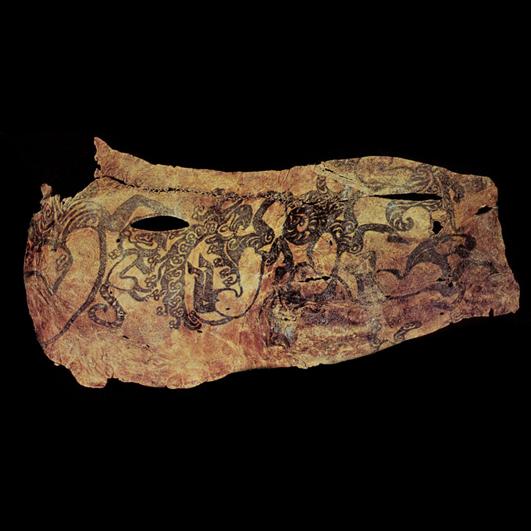












































































_-_WGA03407.jpg)




















---11th-Century-Pala-Period-Buddhist-Sculpture.jpg)












































_Topkapi_Palace_Library%2C_Istanbul.jpg)
















%2BArrangement%2Bin%2BGrey%2BPortrait%2Bof%2BMaster%2BStephen%2BManuel.jpg)



















.jpg)
.jpg)
.jpg)

















































































































_01.jpg)











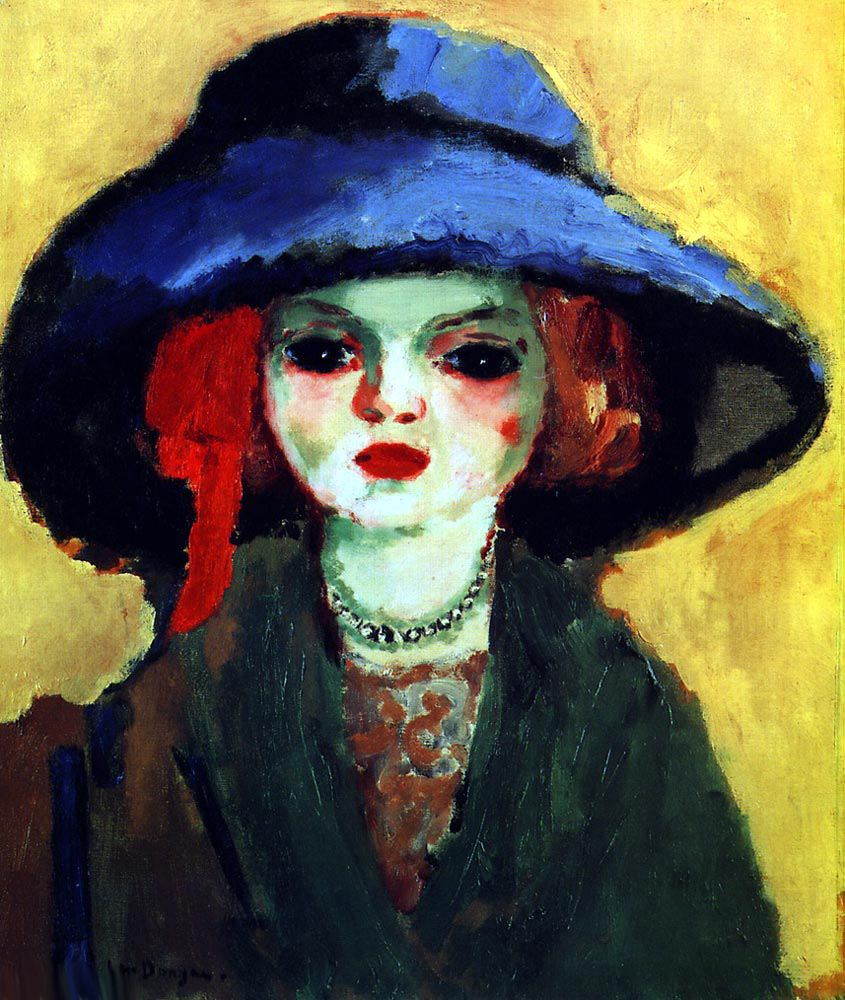




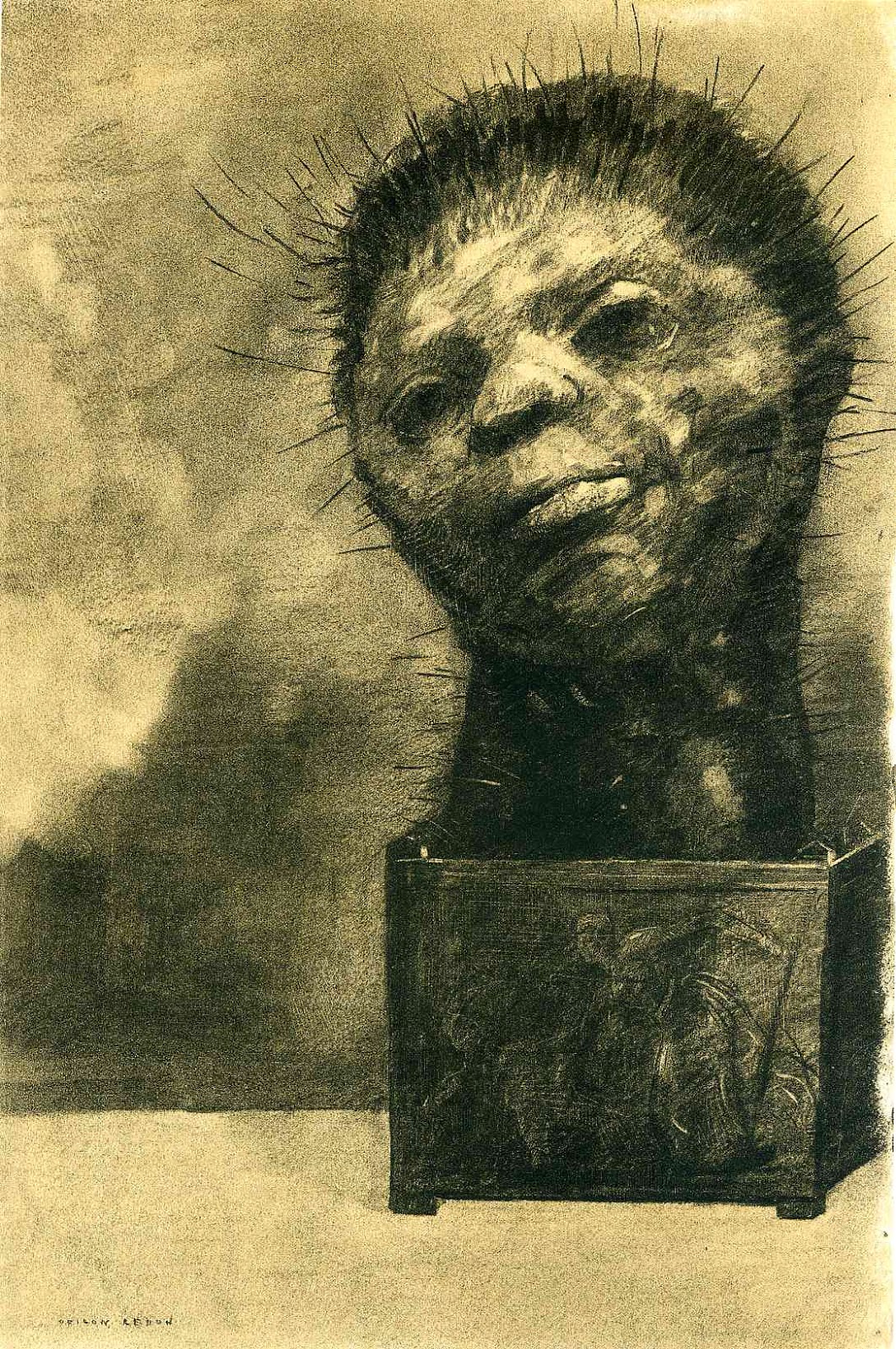



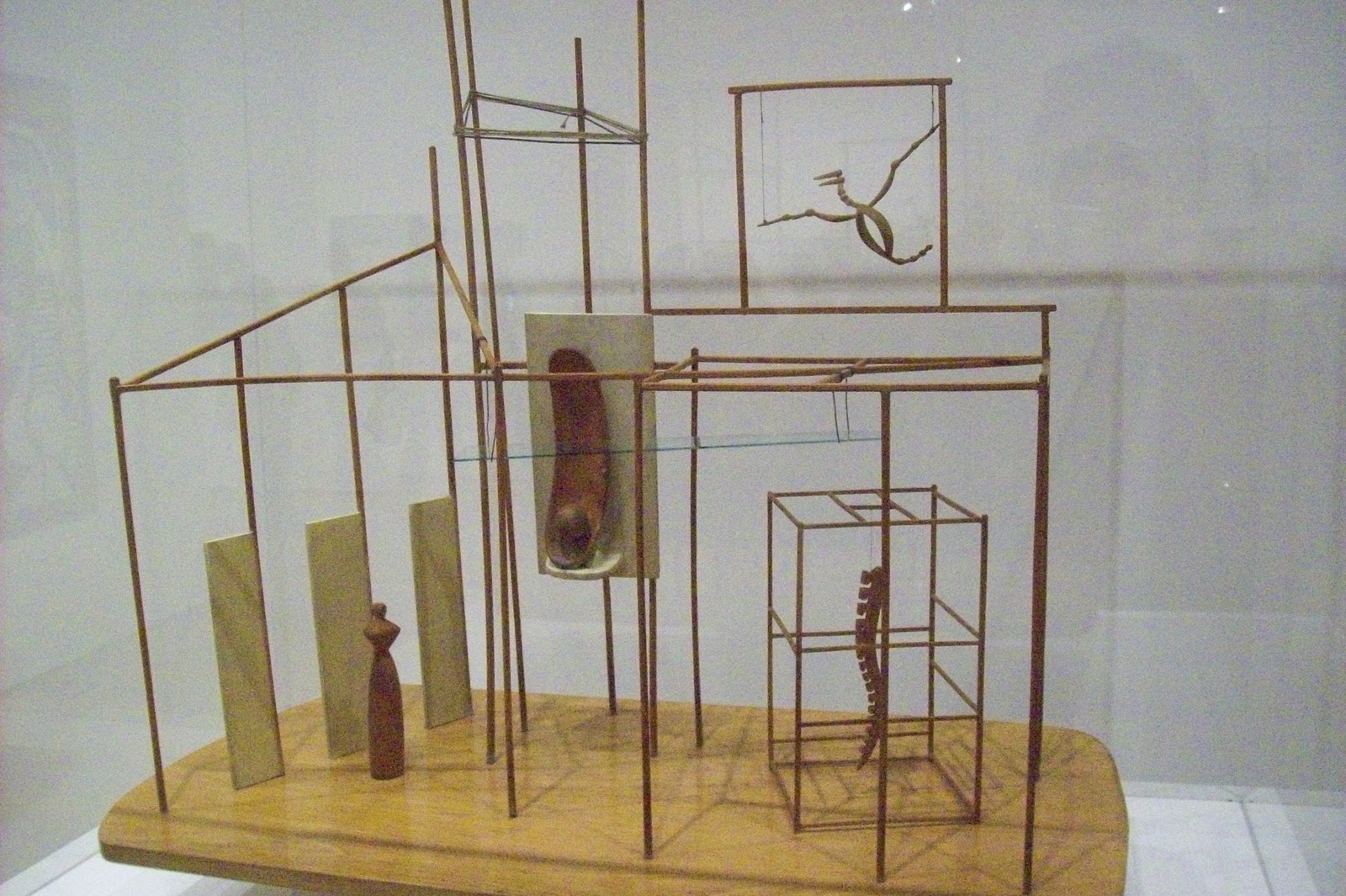



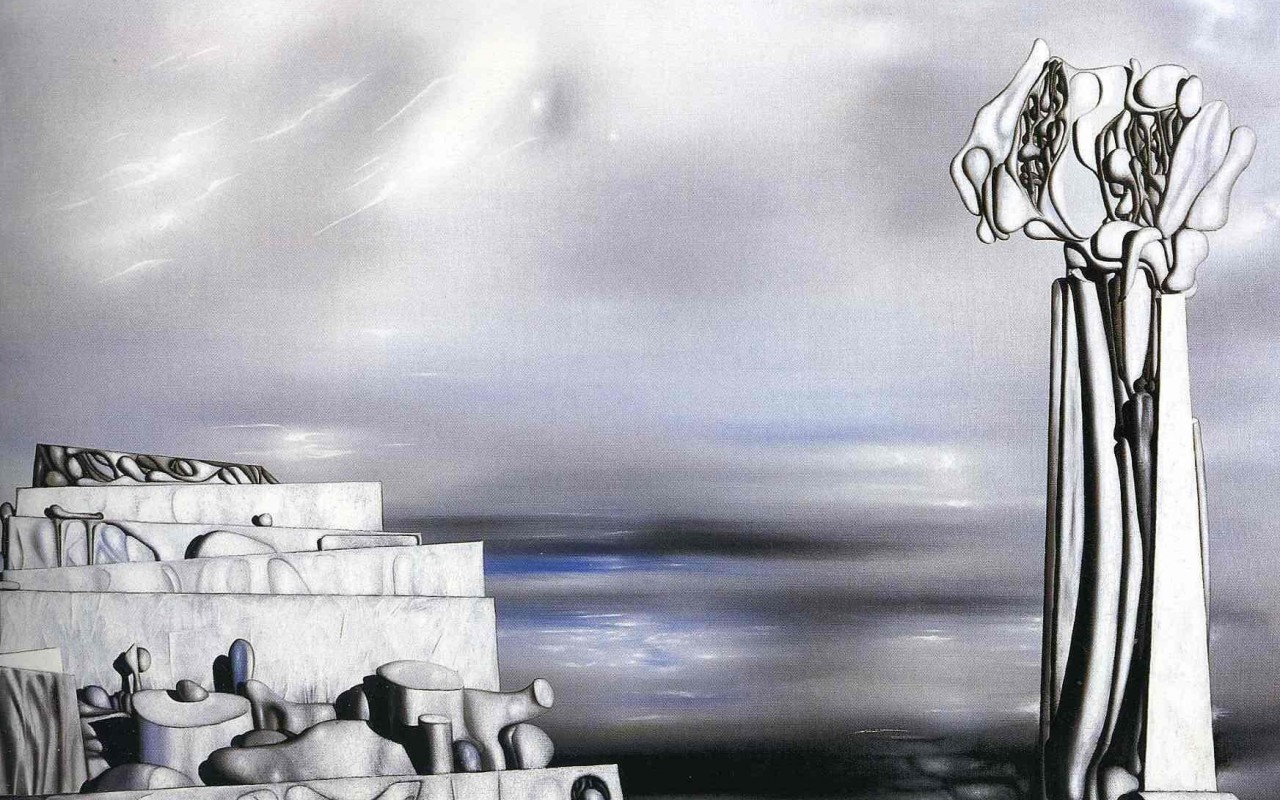







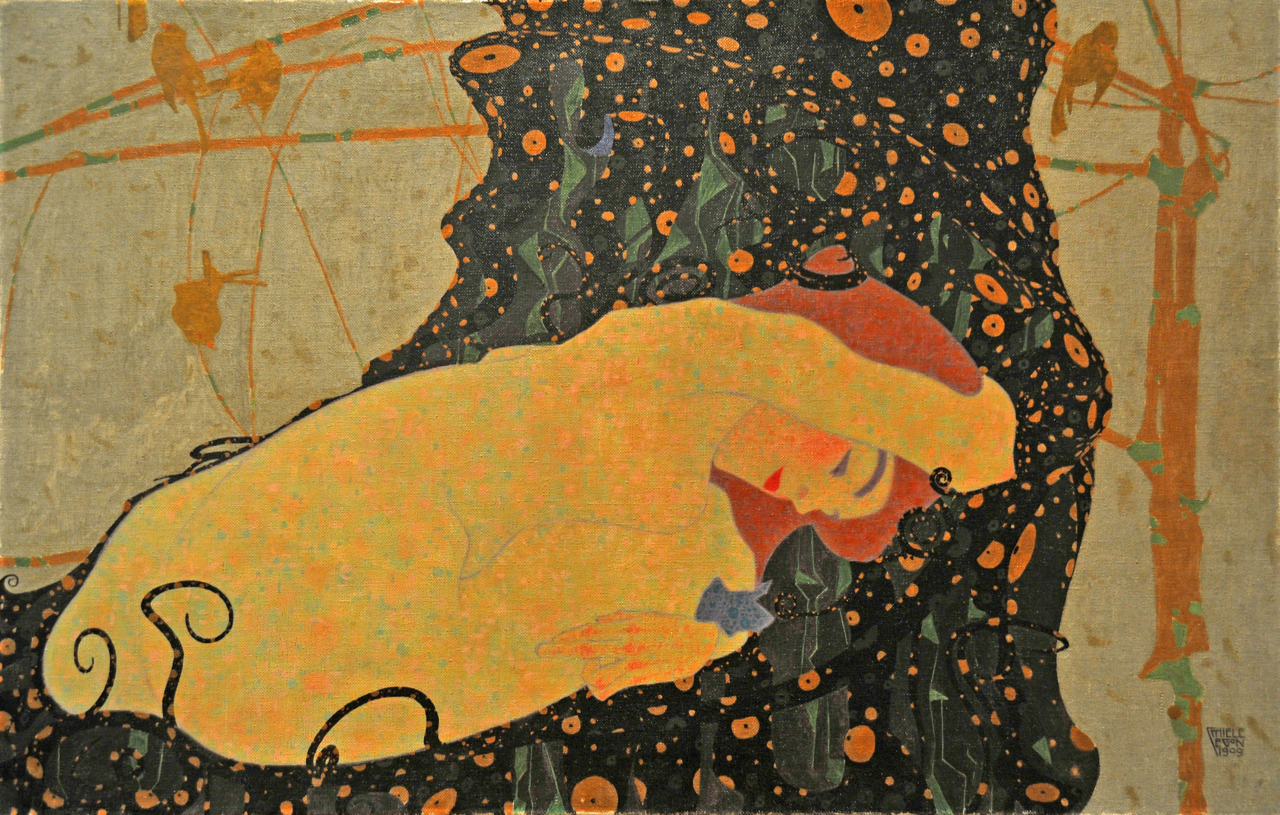






.jpg)













